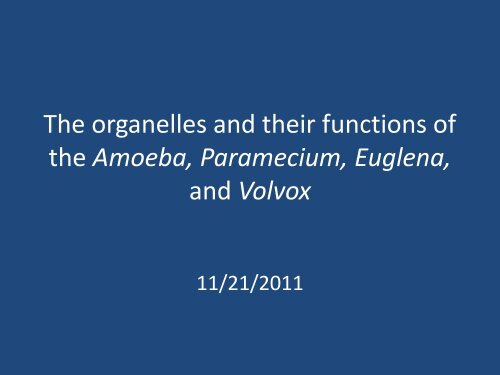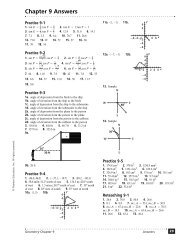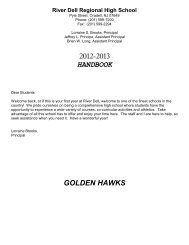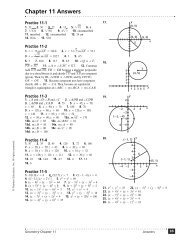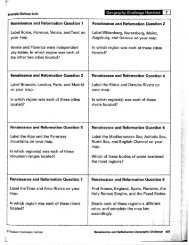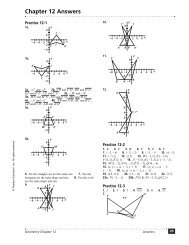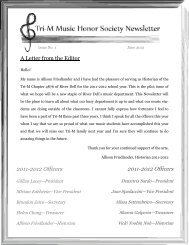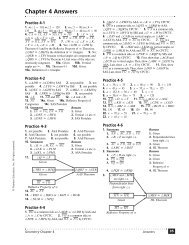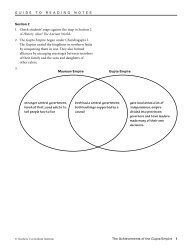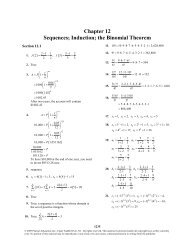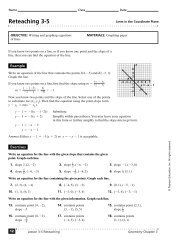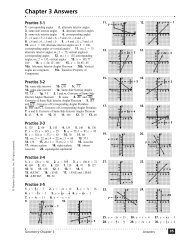protist powerpoint
protist powerpoint
protist powerpoint
You also want an ePaper? Increase the reach of your titles
YUMPU automatically turns print PDFs into web optimized ePapers that Google loves.
The organelles and their functions of<br />
the Amoeba, Paramecium, Euglena,<br />
and Volvox<br />
11/21/2011
The Amoeba, Paramecium, Euglena, and Volvox<br />
All are <strong>protist</strong>s: eukaryotes that cannot be classified as animals,<br />
plants, or fungi.<br />
Classified by their movement and way of life.<br />
Movement<br />
• Amoeboid (pseudopodia)<br />
• Ciliate (cilia)<br />
• Flagellate (flagella)<br />
• Parasitic (attachment to a<br />
host cell)<br />
Way of Life<br />
• Autotrophic: make their own<br />
food (plantlike)<br />
• Heterotrophic: consume<br />
autotrophs or other<br />
heterotrophs (animal like)<br />
• Heterotrophic w/ cell walls and<br />
reproduce w/ spores (sort of<br />
animal and plantlike fungus<br />
like)
The Amoeba, Paramecium, Euglena, and Volvox<br />
Organelles in common<br />
• Nucleus<br />
• Cytoplasm<br />
• Food vacuoles: food that is being digested or<br />
broken down to provide the cell with energy.<br />
• Contractile vacuoles (vesicles): pump excess<br />
water from the cell; keeps water levels w/in<br />
the cell consistent.
The Amoeba, Paramecium, Euglena, and Volvox<br />
Differences in organelles<br />
Amoeba (0.25mm – 2.5mm)<br />
• Pseudopodia<br />
• Cell membrane<br />
• Endoplasm<br />
• Ectoplasm<br />
Paramecium (up to 2mm) *most<br />
complex<br />
• Cilia<br />
• Pellicle<br />
• Oral groove<br />
• Anal pore<br />
• Macronucleus<br />
• Micronucleus<br />
Euglena (15 – 500µm)<br />
• Flagella<br />
• Pellicle<br />
• Stigma/eyespot<br />
• Chloroplasts<br />
Volvox (can be large enough to be<br />
seen w/ the naked eye)<br />
• Flagella<br />
• Cytoplasm<br />
• Chloroplasts<br />
• Live in colonies
Moves by stretching its cytoplasm into<br />
finger like extensions or pseudopodia
Cell membrane is very flexible and<br />
allows the organism to change shape<br />
constantly.
Has 2 types of cytoplasm <br />
endoplasm and ectoplasm
Endoplasm granular inner mass; darker<br />
cytoplasm toward interior of the cell.
Ectoplasm absorb water and removes carbon<br />
dioxide clearer cytoplasm found near the cell<br />
membrane.
It pushes its endoplasm toward cell<br />
membrane to move and consume<br />
food.
Use cilia to aid in locomotion and gather food.<br />
Cilia extends out from pellicle.
Pellicle stiff but flexible covering gives the<br />
organism its shape.
Most complex single celled organism with two nuclei:<br />
macronucleus & micronucleus
Macronucleus larger nucleus, controls everything, but<br />
reproduction.
Micronucleus smaller nucleus, controls<br />
reproduction (asexually through binary fission and/or<br />
sexually through conjugation).
Oral groove collect food w/ the aid of cilia
Anal pore expel wastes
Flagellum used to aid in locomotion<br />
may have more than one
Pellicle flexible surrounding<br />
envelope that allows the organism to<br />
change shape.
Can absorb food directly through the pellicle or<br />
produce food through photosynthesis – food is<br />
stored as a complex carbohydrate.
Eyespot/stigma detects light to aid<br />
the organism in finding sunlight for<br />
food production.
Chloroplast trap sunlight to be used<br />
for photosynthesis.
Nucleolus contains the nucleus of<br />
the cell.
Volvox: common single celled pond algae that consists<br />
of one or more colonies.
Each cell uses its flagella simultaneously to<br />
move the colony.
Absorb food through the cell surface or produce<br />
it through photosynthesis through use of<br />
chloroplasts and store it as a complex<br />
carbohydrate.


